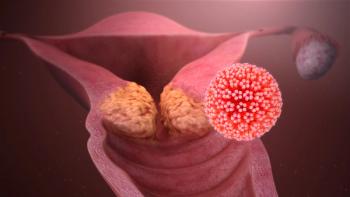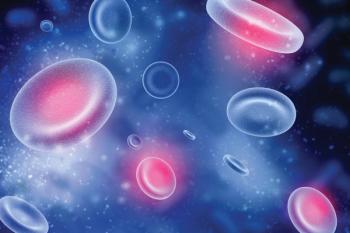
Efficacy Seen in Leptomeningeal Disease With Rhenium Obisbemeda Therapy
Andrew Brenner, MD, PhD, stated that rhenium obisbemeda elicited similar results in leptomeningeal disease as it did in recurrent glioma.
Although results showed that rhenium obisbemeda improved survival and had no dose-limiting toxicities in recurrent glioma in the phase 1/2 ReSPECT-GBM trial (NCT01906385), investigators are also exploring the agent’s usability in leptomeningeal disease in the phase 1 ReSPECT-LM trial (NCT05034497).1,2
In recurrent glioma, the median overall survival (OS) was 11 months in all patients and 17 months in those with an absorbed dose of greater than 100 Gy. In leptomeningeal disease, it was reported that 86% of patients (n = 12 of 14) experienced a clinical response, with 2 responses and 10 cases of stable disease; the median OS was 9 months.
Andrew Brenner, MD, PhD, a professor of medicine in the Division of Hematology and Oncology at the University of Texas Health Science Center at San Antonio, told CancerNetwork® that they were seeing similar results in leptomeningeal disease compared with what was observed in glioblastoma.
Transcript:
We are also studying [rhenium obisbemeda] in leptomeningeal disease. In leptomeningeal disease, we’re seeing similarly excellent results for glioblastoma. In the setting that we’re currently studying, it is in the recurrent setting following chemoradiation but prior to any antiangiogenic therapy. It’s going to be in phase 2. We’re limiting it to tumors of 20 mm or less. Why? Because we know we can get a good distribution of the drug; we routinely saw that we were getting about 30 mL of distribution. That correlates to about a 2.5-cm tumor. When we consider that 90% of the recurrences tend to be within a couple of centimeters of the resection cavity and tend to be within that size—about two-thirds to three-quarters of tumors tend to fall within that size range—we should be able to allow the bulk of patients to participate. It is broad inclusion in terms of requiring not having received prior bevacizumab [Avastin] and then being in that tumor size, and that’s what we’re going for in terms of indication.
References
- Brenner AJ, Patel T, Bao A, et al. Convection enhanced delivery of rhenium (186Re) obisbemeda (186RNL) in recurrent glioma: a multicenter, single arm, phase 1 clinical trial. Nat Commun. 2025;16(1):2079. doi:10.1038/s41467-025-57263-1
- Plus Therapeutics presents positive ReSPECT-LM phase 1 interim data for leptomeningeal metastases at the 2024 SNO Annual Conference. News release. Plus Therapeutics. November 25, 2024. Accessed June 18, 2025. https://tinyurl.com/42d7w545
Newsletter
Stay up to date on recent advances in the multidisciplinary approach to cancer.






















































































